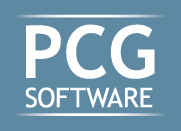On January 1, 2015, the Centers for Medicare & Medicaid Service (CMS) introduced 4 Healthcare Common Procedure Coding System modifiers, known collectively as the – X(EPSU) modifiers, as a subset of Current Procedural Terminology (CPT) modifier 59 (distinct procedural service).
Modifier 59 is the most commonly used and abused modifier for Medicare reimbursement of CPT codes in acupuncture, breast biopsies, physical therapy, radiology, surgery and other medical practices. It often causes incorrect payments, triggering audits, fraud, waste and abuse (FWA) cases and escalating costs for everyone.
The 2013 Comprehensive Error Rate Testing reports $2.4 billion was paid on claims containing modifier 59 with a projected error rate of $450 million. While modifier 59 is not the sole culprit, if it caused 10% of the errors it would represent $45 million in damages.
Modifiers XE (separate encounter), XP (separate practitioner), XS (separate structure) and XU (unusual non-overlapping service) are to be used, together with National Correct Coding Initiative (NCCI) edits, to identify distinct services in the same encounter warranting separate reimbursement.
While it encourages migration to the new modifiers, CMS currently allows providers to submit either modifier 59 or the appropriate X modifier to override Correct Coding Initiative (CCI) edits and get paid. The new codes were designed to be more descriptive, provide more precise coding options, reduce errors, improve claims processing, make payments more accurate, reduce FWA and save money. But, because CMS has not issued clear guidance to use the new modifiers, as promised, the change, instead of improving the situation, has exacerbated it. This has caused denied claims, frustrated workers and has increased costs even more.
To read the full article, visit the American Journal of Managed Care.





